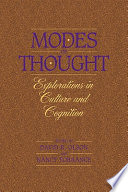 | John Ewing - Mathematics - 1994 - 348 pages
...nothing else." To quote an example which the author himself gives, the proposition that "the square on the hypotenuse of a right-angled triangle is equal to the sum of the squares on the other two sides" is a categorical proposition, and is not therefore mathematical.... | |
 | Susan Rusinko - Drama - 1994 - 236 pages
...bent over those exercises of yours, wondering why Debusson Major could never realize that the square on the hypotenuse of a rightangled triangle is equal to the sum of the squares on the other two sides, at the back of my mind it made me feel . . . somehow . . . I cannot... | |
 | David Fideler - Science - 1993 - 446 pages
...achievements, one of the most profound and far-reachinghas at its origin the discovery by Pythagoras that the hypotenuse of a right-angled triangle is equal to the sum of the squares of the two sides containing the right angle. Two conditions were involved in Pythagoras'... | |
 | Rudolf Steiner - Anthroposophy - 1995 - 180 pages
...lessons to reach their climax, their summit, in the Theorem of Pythagoras, which states that the square on the hypotenuse of a right-angled triangle is equal to the sum of the squares on the other two sides. It is a marvelous thing if you see it in the right light. I once... | |
 | Michael F. N. Dixon - Language Arts & Disciplines - 1996 - 260 pages
...fixed procedures that deliver a conclusion whose certainty is that of a priori definition. "The square on the hypotenuse of a right-angled triangle is equal to the sum of squares on the other two sides" states a Pythagorean axiom of given truthvalue within the closed system... | |
 | Mary Biggs - History - 1996 - 544 pages
...into my head which seems to have inhabited some corner of my brain since that early time: "The square on the hypotenuse of a right-angled triangle is equal to the sum of the squares on the other two sides!" There it sticks, but what of it, ye gods, what of it? JESSIE B.... | |
 | David R. Olson, Nancy Torrance - Education - 1996 - 324 pages
...strongest. Surely no one is going to deny that 2 + 2 is 4 in both China and Greece. Surely the square on the hypotenuse of a right-angled triangle is equal to the sum of the squares on the other two sides, whether we call this Pythagoras' theorem, or Gou Gu. Indeed, indeed.... | |
 | Plinio Prioreschi - Medicine - 1996 - 651 pages
...himself discovered what we call the Pythagorean Theorem. In Proclus's In Euclidem, we find: The square on the hypotenuse of a right-angled triangle is equal to the sum of the squares on the sides enclosing the right angle. If we pay any attention to those who like to recount... | |
 | 298 pages
...(notably Copernicus and Kepler). Schoolchildren are taught the Pythagorean theorem, that the square on the hypotenuse of a right-angled triangle is equal to the sum of the squares on the other two sides. Fewer students may remember that Pythagoras symbolized the divergent... | |
 | Derek Edwards - Psychology - 1997 - 370 pages
...as Chapter 3 of Billig et al. (1988). 6. Pythagoras's theorem is the one that states that the square on the hypotenuse of a right-angled triangle is equal to the sum of the squares on the other two sides - but then you knew that already, of course, without being taught,... | |
| |